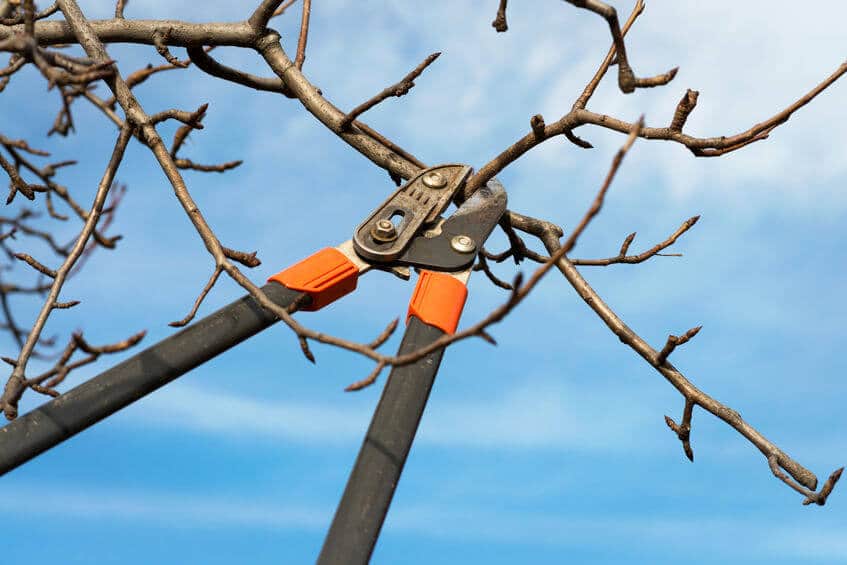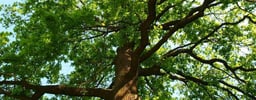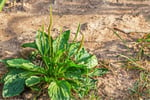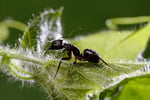
You are probably wondering is there anything good about thatch? Well, in fact there are some benefits to a thin layer of thatch up to ½ inch thick. The goal with our lawn core aeration service is to maintain your lawn to ½ inch or less thatch layer.

As it occurs in healthy, manicured lawns, there are many benefits to thatch, including:
- A more tolerant grass
- Soilless susceptible to compaction thanks to cushioning
- Cushioning to increase safety for athletes playing on grass
- Creation of mulch, preventing accelerated drying of the soil surface
- Reduction of erosion
What about Other Types of Lawn Dethatching?
Perhaps you’ve heard that other dethatching techniques or power raking is better for your lawn than core aeration. In our experience, core aeration is the most reliable means of achieving desired results as it allows water, air and fertilizer to penetrate the thatch layer to get to the root zones. It also provides a space for seeds to germinate if you over seed the lawn.
We recommend for lawn core aeration to be done at a minimum of once a year. It can be performed any time of year as long as the lawn isn't soggy. Some folks wonder isn't dethatching or power raking better to do? It cleans all that brown hay and old 'thatch' out of the lawn and it sure makes you feel good to get out and do that in the spring. In a word, no! Don't do it!
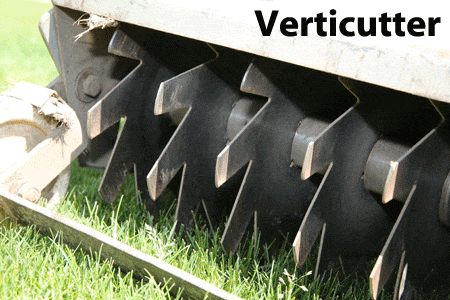 Dethatching uses a machine to cut and tear out thatch and grass plants from the turf. A machine called a solid tine Dethatcher, or a Verticutter, cuts deeply into the turf. These machines are very hard on turf and usually are only available to professionals because of their high cost.
Dethatching uses a machine to cut and tear out thatch and grass plants from the turf. A machine called a solid tine Dethatcher, or a Verticutter, cuts deeply into the turf. These machines are very hard on turf and usually are only available to professionals because of their high cost.
The Verticutter is usually only used in a renovation process where the lawn is renewed with a heavy dose of seed and frequently after it has been killed with a grass killer. Even a dethatcher doesn't remove much thatch. Core aeration is the only way to remove and correct a thatch problem.
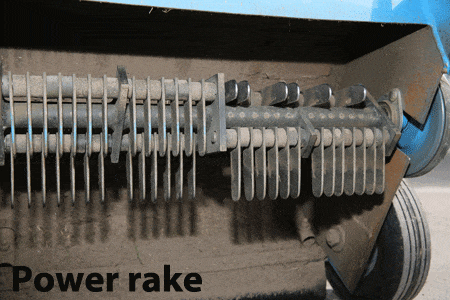 Power Raking uses a similar machine but not as high powered and the knives usually spin freely on the power rake shaft. The knives remove the grass blades left behind after mowing that haven't decomposed over winter or were damaged over the winter. While it is not as harmful as dethatching, it is still very disruptive to the lawn.
Power Raking uses a similar machine but not as high powered and the knives usually spin freely on the power rake shaft. The knives remove the grass blades left behind after mowing that haven't decomposed over winter or were damaged over the winter. While it is not as harmful as dethatching, it is still very disruptive to the lawn.
Hand raking or power raking can be done but does little except remove winter-killed grass that will breakdown anyway. You will not remove the thatch or correct a thatch problem using this process. Core aeration is the only way to remove thatch and not harm a lawn's delicate dependent systems.
It may require multiple lawn core aeration services over time to remediate a severe thatch layer on your lawn. If you have a severe thatch problem, two or three aeration services per year may be required to improve the health and growth of your lawn.
But, don't grass clippings cause thatch? In a word, no! Grass clippings are actually about 95% water and nutrients. Once the water leaves the grass blade, it will decompose and return nutrients to your lawn. Sometimes clippings don't decompose overwinter and may be raked up to make the lawn look greener or allowed to decompose over time. Leave clippings on your lawn when possible to return the nutrients and organic material back to your lawn. We call that Grasscycling!
See our other lawn care tips for more information on maintaining a healthy lawn. Contact us at (877) 944-4007 to schedule your core aeration today or click for a free estimate and customized lawn care program.


